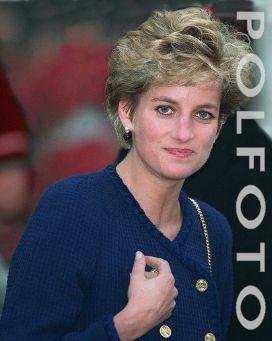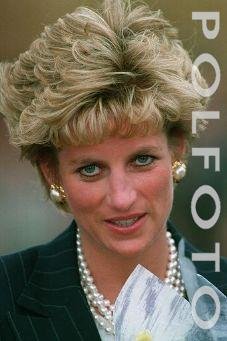Late royal honored on anniversary of her death
(CNN) -- Princess Diana's legacy remains intact five years after her death. Thousands have flocked to her grave site in Althorp, England, to pay homage to "the people's princess," a woman whose presence touched lives and organizations around the world.
In the early morning hours of August 31, 1997, the princess, along with her boyfriend Dodi Fayed and their driver Henri Paul, died in a fatal car crash in a Paris, France, tunnel while speeding to elude a horde of photographers pursuing the couple's limousine.
The press and the world were caught off guard by this sudden tragedy. Images of mourning and remembrance dominated international media coverage for weeks following the accident.
Diana's brother, Charles, the ninth Earl Spencer commented on the indelible mark his sister left on the world.
"Diana was unique because she had various gifts, and they all came together in one person," Spencer said. "She was phenomenal with people, and when they saw her, they thought she was great. She was exactly who she was. She wasn't going to be crushed by the royal system; she was always going to be true to herself."
Spencer's description helps to explain the enormous appeal of Diana.
She broke the boundaries of royal life with candid public interviews that focused on her feelings and struggle with depression. With her dedication to 100-plus charities, she drew more attention than the typical royal family member to her humanitarian work.
Despite her efforts to fit in, she was shunned by many of her peers and mobbed by the press. One thing no one could have measured before her death was how beloved she was.
Diana's final resting place, on an island in the center of a lake on the Althorp estate, draws thousands of visitors. The estate, which includes the Spencer house, stables, a lake and 14,000 acres of countryside, has been home to the Spencer family for nearly 500 years.
Born into nobility
Christened Diana Frances Spencer, the future princess was born July 1, 1961, to Frances Roche and Viscount Althorp, who would become the eighth Earl Spencer. Diana was the third of four children in the aristocratic family.
Diana had two older sisters, Sarah and Jane, and one younger brother, Charles. The Spencers lived a life of luxury, spending their early years at Park House, a 10-room mansion on the queen's country estate in Sandringham, Norfolk. The boy living next door would be her future husband.
"Diana knew Charles as a child," said Diana biographer Lady Colin Campbell, but "there was a big age gap."
Charles was more than 12 years her senior, so Diana played with royal children nearer her own age, such as Charles' younger brothers, Prince Andrew and Prince Edward.
Her privileged upbringing did not guarantee a happy childhood. In 1969, Diana's parents divorced in a bitter and public display.
"She was being pulled back and forth between both parents who were using her and (her brother) Charles in a war of attrition," Campbell said. "She was a hostage in this war."
Her father won custody of the children. When Diana was 13, she and her siblings moved to the Spencer family home at Althorp, 75 miles north of London.
She enrolled in the fashionable West Heath boarding school, where she was called Lady Diana after her father became an earl. Diana showed interest in music and dance and a desire to work with children.
At 18, she decided to move to London and pursue her dream of helping children. She found work as a nanny and then as a kindergarten teacher.
In the summer of 1980, Diana received a phone call that would change her life. Prince Charles asked for a date. Soon Diana had a new boyfriend and an intimate relationship with the press.
"Can you imagine coming out of a door and seeing 16 flashes in your face and not having seen this before? This woman couldn't go shopping," said Marlene Eilers, a royal genealogist. "She couldn't conduct a public relationship privately; no matter what she did, the press wanted to be there."
Six months after their first date, a polo outing, Charles proposed to Diana after a candlelit dinner for two at Buckingham Palace. She accepted and would soon become the Princess of Wales.
Their wedding was an elaborate affair. Crowds packed the London streets, and millions watched worldwide on television as Charles and Diana exchanged vows at St. Paul's Cathedral on July 29, 1981.
Diana's relationship with the press before the wedding was a precursor of what would follow.
Royal photographer Jayne Fincher said, "Everybody had gone completely Diana mad. It was amazing the sort of mania about her."
Less than a year after the royal wedding, Diana gave birth to Prince William Arthur Philip Louis on June 21, 1982. Two years later, Prince Harry Henry Charles Albert David was born September 15.
The early years of their marriage appeared to be happy times for the royal couple, but soon there were indications of strains.
"There were signs from about '86 onward," Fincher said. "You would see them, and they would look really miserable at times. She looked really miserable."
Campbell recalls this period. "She felt that she was in a prison behind bars," Campbell said. "She couldn't stand being caged any longer."
Eventually, Diana learned that Charles was devoted to another woman, Camilla Parker-Bowles, someone the prince had been close with for years.
Struggling with an eating disorder and depression, Diana watched her marriage fall apart.
"The pressures of fame on someone who had such a fragile personality, even before she got married. ... She started to collapse and crack," Campbell said.
But instead of falling apart, Diana decided to use her fame and the media to her advantage.
She became an activist for dozens of causes, namely cancer, leprosy, homelessness and AIDS. In a visual statement about her passion for those who were suffering from AIDS, she held hands with an AIDS patient on television. The scene was played around the world.
"The image of her holding hands with HIV/AIDS. ... It shattered the stigma, prejudice and fear that surrounded HIV/AIDS in the early days," said Andrew Parkis, chief executive of the Diana Princess of Wales Memorial Fund.
Despite the success of her public work with charities, Diana remained troubled in her private life. Her failing marriage was the focus of much public discussion after the 1992 book "Diana: Her True Story" was published. It included allegations of Charles' long-running affair with Parker-Bowles.
By December 1992, Charles and Diana had agreed to a legal separation, which Prime Minister John Major made public in the House of Commons.
In 1993, Diana spoke out against the press. She said the media was partly to blame for the failure of her marriage.
"I realize then that their attention would focus on our private and public lives," she said, "but I was not aware of how overwhelming that attention would become and how it would affect my public duties and my personal life in a manner that's been hard to bear."
After the separation, Diana appeared more at ease with the press and herself. She acted more confident and experimented with her image, trying bolder styles and new haircuts.
"She lost her identity when she married Charles," Campbell said. "The freedom she had once out of her cage, it empowered her."
The couple eventually divorced in August 1996. Diana won a settlement estimated at $27 million but lost the right to the title, Her Royal Highness. She continued, however, to live at Kensington Palace.
After the divorce, she dug into more charity work, making appearances in support of a ban on landmines.
Romantically, Diana was linked to Fayed, the 42-year-old son of wealthy businessman Mohamed Al-Fayed.
Dubbed the princess and the playboy, they were pictured in Britain's tabloid newspapers.
In August 1997, eight weeks after her 36th birthday, Diana joined Fayed for a vacation in France. On August 31, the couple died in a Paris car crash as they sped to elude paparazzi. Driver Paul also was killed; Diana's bodyguard, Trevor Rees-Jones, was the sole survivor of the crash.
The world was shocked by Diana's death, and thousands flocked to London and Paris in mourning.
On the day of her funeral, September 6, 1997, millions of people lined the streets of London. A gun carriage brought Diana's body from her home at Kensington Palace to Westminster Abbey. Prince Charles, Diana's brother, Charles, and sons William and Harry walked behind.
Humanitarian work lives on
During her lifetime, Diana was one of the most well-known faces in the world, and her humanitarian work was among her greatest achievements.
An exhibition honoring Diana's life recently opened at Althorp. Some of the dresses that she was photographed in are on display.
The Diana Princess of Wales Memorial Fund, set up after her death, has raised almost $63 million and distributes funds to dozens of causes supported by Diana, including AIDS prevention, the hospice movement and landmine clearance.
"The memorial has done a lot of good ...," her brother said. "It's really sorted out the difficult causes and helped them, like Diana did. ... She didn't go for the soft option. She didn't go for the conventional charitable ideas that appealed to other people. ... She went for the messy ones, the complicated ones, the frightening ones and made them her own."
But the princess' sons are her true living legacies.
"Diana tried her best to show her sons what the world was like for people that were not royal," Campbell said. "She never tried to strip them of their royalty. She tried to top off the royal gloss with dashes of ordinariness to make them be better royals."
Spencer said he has told the boys to come to their uncle with any problems, even though he knows he can never replace his sister. He has, however, taken up some of her causes, by touring hospitals and visiting landmine victims in Cambodia.
In Althorp, he devotes himself to her legacy. A new exhibition celebrating her life and work opened July 1, 2001 to commemorate what would have been Diana's 40th birthday.
"If you go back 20 years, nobody knew how big she would be in terms of global superstar," he said.
"I just assumed she would be run-of-the-mill royal princess and go and cut some ribbons and do all the stuff they have to do. But she was way beyond all that. ... When she stepped up on that stage, she wasn't out of place. She did more than anyone could have expected."



 " Fawcett burned some of the other tapes in this set in the grove at Highgrove. There's no telling what Charles would do to get his hands on the rest of the tapes.
" Fawcett burned some of the other tapes in this set in the grove at Highgrove. There's no telling what Charles would do to get his hands on the rest of the tapes.





























